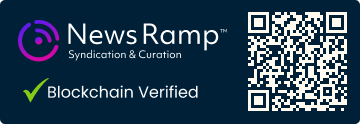In a significant development for the Ethereum ecosystem, Arcology Network has introduced the first-ever EVM-equivalent multi-threaded rollup, aiming to revolutionize Layer 2 solutions. This innovative technology promises to deliver unparalleled performance and efficiency to developers building complex and resource-intensive decentralized applications (dApps).
Arcology's state-of-the-art parallel transaction execution engine and optimized storage enable the development of applications that were previously too complex or expensive to run on-chain. The new rollup has great features such as EVM parity, parallel transaction processing, 1.5 second blocking time, and the ability to process 10,000 to 15,000 transactions per second (TPS). Additionally, it offers a 1.5 billion block gas limit and is designed to be Miner Extractable Value (MEV) resistant.
The introduction of Arcology's Parallel Execution Rollups helps address critical challenges in the Ethereum ecosystem. As Ethereum moves to a rollup-centric model, existing layer 2 solutions have suffered from scalability issues as they inherit Ethereum's single-threaded design. This limitation can result in network congestion and significant price increases that may make certain applications economically unfeasible.
Compared to popular layer 2 frameworks such as Optimism and Arbitrum, which still use Ethereum's single-threaded design, Arcology's multi-threaded rollup offers significantly higher performance without the risk of price hikes . While other Layer 2 solutions typically support only a few hundred TPS with a gas limit of 5 million to 10 million, Arcology's system can handle 10,000 to 15,000 TPS with a block gas limit of 1.5 billion.
Arcology's solution also provides an attractive alternative to high-performance layer 1 blockchains like Solana. Solana offers performance improvements, but requires developers to move away from the Ethereum ecosystem. In contrast, Arcology maintains parity with EVM, allowing developers to use familiar tools while benefiting from parallel execution and greater scalability.
The real-world impact of Arcology's technology could be significant, especially in industries such as gaming, finance, and decentralized social networks, where fast, low-cost transactions are critical. Developers can now create dApps that require high computational power without being limited by high fees or slow execution times.
Arcology extends the original Ethereum virtual machine architecture to deliver performance improvements by enabling parallel transaction processing while maintaining 100% EVM parity. The system employs optimistic concurrency control to protect data integrity during concurrent transactions. To further enhance performance, Arcology provides the Solidity library that helps eliminate conflicts in contract code, allowing developers to take full advantage of parallelism.
Arcology mainnet is scheduled to launch by June 2025, and the network is inviting developers to explore its capabilities and contribute to the next generation of decentralized applications. Early participants may have the opportunity to earn rewards through future incentive programs designed to encourage the development of high-performance, resource-intensive applications on the network.
As the blockchain industry continues to evolve, Arcology's parallel execution rollup represents a significant step forward in addressing the scalability challenges faced by Ethereum and its Layer 2 solutions. Arcology has established itself as a potential game changer in the world of decentralized applications and blockchain technology by providing a high-performance, cost-effective alternative that remains compatible with the Ethereum ecosystem. Masu.

